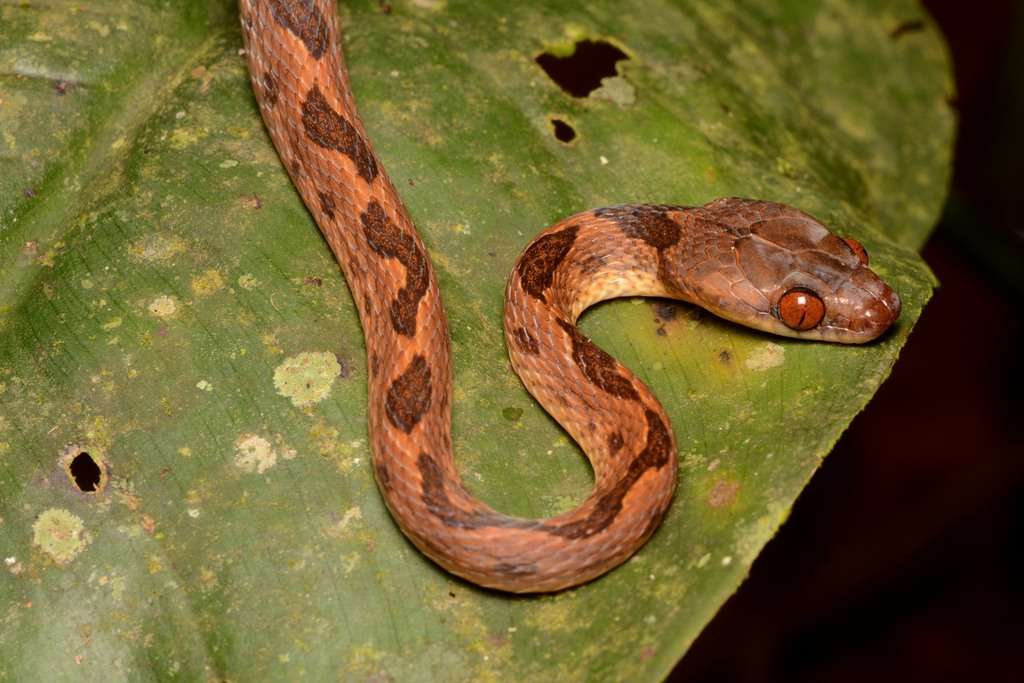
Description:
Scientific name: Leptodeira
Life span: 15+ years
The long, slender bodies of cat-eyed snakes, which can reach lengths of 5 feet, are their distinguishing feature. The eyes, which are disproportionately large for the body and have vertical pupils that resemble cats’, are by far the most striking characteristic. They occur in a variety of colors, including brown, pale yellow, and reddish-orange with big dark marks or saddle forms down the back, depending on their age and geographic area. These reptiles are categorized as rear-fanged snakes.

Native Region/Habitat
This species can be found as far south as northern Argentina and as far north as Guerrero, Mexico. located at altitudes of 4–1400 m. Both Trinidad & Tobago and the outlying island of Margarita are home to it. It is indigenous to Trinidad and Tobago and is pervasive there. found primarily in lowland places. The semi-arboreal cat-eyed snake favours shady, semi-arid environments with light canopy.
Behavior:
These reptiles hardly ever bite. When handled, they frequently want to get away and don’t hold still. Their primary method of defense against predators is the release of an offensive odor. When bitten, their venom is weak and has minimal impact on people. Affected areas may swell and become sensitive. They coil up to blend in with the forest floor and can be mistaken for the deadly mapepire.
Care As a pet/In captivity:
Enclosure: Mature specimens need a vivarium that is at least 90 cm by 45 cm in size. Given how active these snakes are in the trees, height should permit some climbing. Use fine orchid bark as a substrate after that, though Lignosol or another comparable wood-based substrate would also work. Branch furniture, cork bark hides, and moist sphagnum moss hides are used to decorate the vivarium. A big bowl of clean water is always accessible.
Temperature: Summertime lows are 76F (24C) at night and 84F (28C) during the day. Let the nighttime temperature in winter drop to 70F (21C). One section of the viv is equipped with a UV lamp. Although they repose in places where they can absorb UV light, these snakes are nocturnal. In smaller plastic tubs with a similar layout to those used for adults, juveniles are kept.
Feeding: Due to their insatiable appetites, caution should be used when feeding these snakes. After that, feed several prey items of the right size. tiny mice, house geckos, day-old quail, and pink rat rats. Although they might be challenging feeders, juveniles typically eat little geckos, pinks, or frogs.
Table





